The Lion in Winter & the Middle Ages
SERVING AMERICAN SECONDARY SCHOOLS FOR 28 YEARS
THE COLLEGE BOARD
“All NEXUS volumes emphasize the critical skills and analogical thinking that are crucial for success on the SAT….The play is accessible and often funny. The teenage sons of Henry II will appeal to students, and the fine Hepburn/O’Toole film is widely available on dvd. The play is decidedly modern: witty anachronisms and ironic asides make that fact impossible to forget. Even if the play is not your principal focus, this unit is a good introduction to medieval life and literature.”
NNAT’L ASSOCIATION OF SECONDARY SCH. PRINCIPALS (NASSP)
“Chapters in The Lion in Winter & the Middle Ages provide any creative teacher with a cornucopia of ideas from which to draw lessons that cross the lines that usually separate subjects.” Breaking Ranks, NASSP
CLASSROOM NOTES PLUS, NCTE (National Council of Teachers of English)
“Each [NEXUS] volume…is a hybrid of a well-written interdisciplinary textbook and a lively, attractive magazine.”
The Lion in Winter & the Middle Ages unit is an ideal vehicle for linking great literature and medieval history and for making both subjects much more engaging. For example, instead of teaching medieval history in the abstract, which many students find dull, this unit personalizes the Crusades, Gothic architecture, Magna Carta, feudalism, & courtly love because the play’s historical characters (Eleanor of Aquitaine, Henry II, Richard the Lionhearted, John, Geoffrey, Philip II, Princess Alais) figured prominently in all of these:
Eleanor of Aquitaine & her husband King Louis VII led the Second Crusade; Richard the Lionhearted and Philip II led the Third Crusade; Abbot Suger, the inventor of Gothic architecture, was Eleanor’s personnel confessor & served as regent of France while she and Louis crusaded; Eleanor and Louis attended the opening of the first Gothic cathedral, Saint Denis; Richard, Philip II, & Eleanor’s granddaughter Blanche of Castile helped pay for the great Gothic cathedral Chartres; John signed Magna Carta; and the principal struggles in the play showcase feudalism and primogeniture.
The sections on medieval relic cults, Thomas Becket, & courtly love prepare students for Chaucer’s Canterbury Tales & the Arthurian romances (Eleanor of Aquitaine and her daughter Marie of Champagne commissioned the earliest & arguably best Arthurian romances, which were penned by Chrétien de Troyes).
The play’s colorful figurative language is an ideal springboard to Shakespeare’s figurative language.
This NEXUS volume also explores the often neglected Arabic scientific revolution of the Middle Ages, including Arabic contributions to astronomy and medicine.
The musical sections examine medieval music and modern rock and folk troubadours.
In the science chapter students investigate principles of physics that Leonardo da Vinci discovered from his studies of the crossbow.
The text in each chapter-lesson is LACED WITH CAPTIVATING ANECDOTES & MINI NARRATIVES THAT GRAB & HOLD STUDENTS’ ATTENTION (see text samples below in green).
NEXUS CROSS-CURRICULAR CONNECTIONS in each Lesson Deepen Students’ Understanding of the Play and Period.
MULTICULTURAL CHAPTERS: ARABIC Contributions to Medieval Culture: Advances in Astronomy, Medicine, and Science
CONTRASTING THE ROLES OF WOMEN: The play and the NEXUS chapter “Courtly Love, An Attitude Toward Women” examine the medieval roles of women, especially by contrasting the brilliant and wily twice-crowned queen Eleanor of Aquitaine with the submissive Princess Alais, who is used as a feudalistic bargaining chip throughout the play.
“CURRENT STUDIES are revealing that adolescents undergo major developmental changes in their BRAIN NETWORKS — that is, in how the different regions of their brains “talk” to one another, co-regulate, and coordinate….It is the networks’ interdependence that strengthens the rationale for a whole learner approach to education, and likely explains why, when done well, such an approach is so powerful. – EDUCATIONAL LEADERSHIP, May 2020
The Educational Leadership article goes on to state that the brain has three interdependent networks, one of which is driven by emotions. When this emotional network is NOT stimulated, which is often the case in academic learning environments with traditional textbooks, the other brain networks do not function as well. “One can think of the kids’ emotional engagement…as fueling motivated thinking, either concrete or abstract, like the outboard motor that both pushes the boat and steers it.” Part of the reason the NEXUS approach is so effective is because it not only connects disciplines, it also connects learning to students’ emotional and experiential brain networks (see The Harlem Renaissance text samples in green, the Julius Caesar text sample under “Lesson on Shakespeare’s Language and the Writings of Julius Caesar,” Antigone text samples: “Antigone’s Challenge: Democracy or Dictatorship” and “A Recipe for Tragedy: Aristotle and Oedipus Rex,” and the Macbeth sample text under “Lesson on Macbeth Themes: Fatal Passion and the War Within.”)
CLICK TO ENLARGE IMAGE
Aligned with COMMON CORE STANDARDS. For secondary students.
The Lion in Winter Lessons Part I –
Eleanor of Aquitaine’s Cultural Connections

![]() Lion in Winter Lessons on the Queen of Love Courts
Lion in Winter Lessons on the Queen of Love Courts
Eleanor of Aquitaine was a key player in the Crusades, Feudalism, Courtly Love, Arthurian romances, and Gothic Architecture.
“I taught you dancing too, and languages and all the music that I knew and how to love what’s beautiful.” – Eleanor to Richard, The Lion in Winter
CRUSADES
Eleanor of Aquitaine participated in the Second Crusade; her son Richard the Lionheart was a leader of the Third Crusade; and her great-grandson Saint Louis led the 7th and 8th Crusades.
GOTHIC ARCHITECTURE
Eleanor of Aquitaine’s advisor and confessor was Abbot Suger, the inventor of Gothic Architecture; her son Richard the Lionheart and her granddaughter Blanche of Castile contributed funds to the building of the great Gothic cathedral Chartres.
HUNDRED YEARS WAR
Eleanor of Aquitaine’s marriage to the future Henry II of England, on the heels of her divorce from Louis VII, helped trigger the Hundred Years War almost two centuries later.
TROUBADOURS and ARTHURIAN ROMANCES
Queen Eleanor helped establish the first vernacular literature in Europe by patronizing the troubadours and the French author of the earliest Arthurian Romances, Chrétien de Troyes. Her grandfather is the first known troubadour; and her second daughter by Louis VII commissioned the first known story of Lancelot.
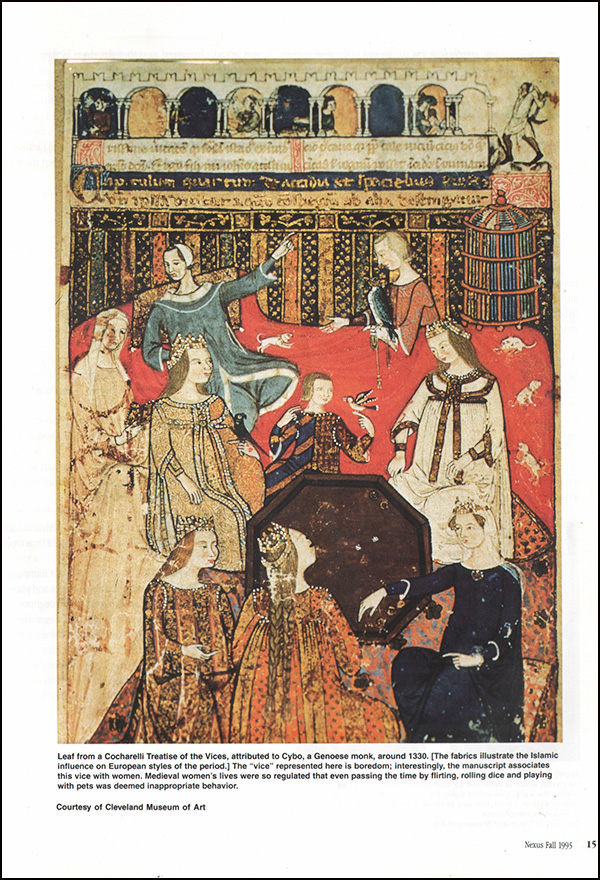
![]() Lion in Winter Lesson on Courtly Love and Love Courts
Lion in Winter Lesson on Courtly Love and Love Courts
Eleanor of Aquitaine helped foster courtly love in Europe, patronized troubadours, and, according to legend, was a judge in love courts. Courts of Love, which are alluded to in the Canterbury Tales, may be fictitious or real. In either case, they were allegedly created by women to protect the rights of women in the macho medieval world. In this chapter-lesson student investigate the roles and rights of women in the Middle Ages. (For more on courtly love see the “Mercutio and Mr. Manners” lesson in Romeo and Juliet and the Renaissance).
TEXT SAMPLE:
“Twelfth-century young men often rode their horses into the castle dining hall and parked them there until they were finished gorging. To transform coarse young men into gentle men in that barbarous age, schools for teaching manners (the equivalent of modern finishing schools) were instituted in the courts of southern France. There is evidence that Eleanor of Aquitaine – the Miss Manners of of the Middle Ages – and her daughter by her first marriage, Marie of Champagne, ran such a school in Poitiers.”
“In these etiquette schools, young men and women received training in courtesy, poise and the arts. They also learned how to flirt – when to encourage and when to feign indifference. Medieval courtship followed a strict set of do’s and don’ts known as the code of courtly love. If a young lady accepted gifts from a man who was paying her court, the code presumably demanded that she eventually take him as her beau. If he gave her a ring, she was required to wear it backwards – with the stone pointing inward – on the little finger of her right hand.”
“Some scholars believe this love code was enforced by courts of love…”
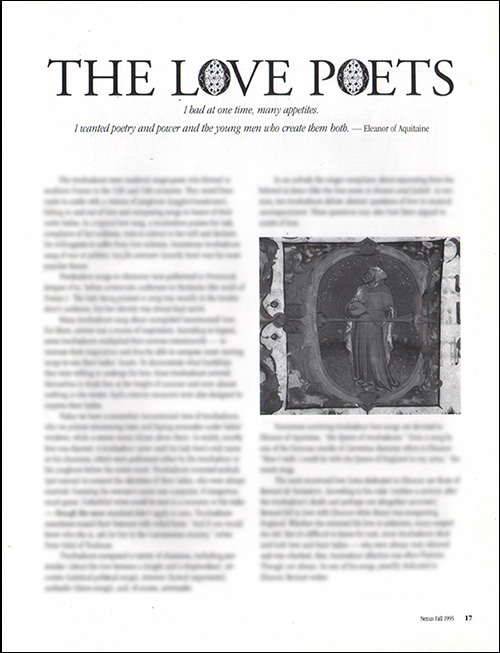
![]() Lion in Winter Lesson on troubadour poetry – the Love Poets
Lion in Winter Lesson on troubadour poetry – the Love Poets
In this lesson students scrutinize troubadour lyrics probably written for Eleanor of Aquitaine as well as the lyrics of a trobairitz, female troubadour, while exploring the tradition that influenced future poets from Dante and Petrarch to Shakespeare to Edmond Rostand’s Cyrano de Bergerac and its modern spinoffs.
TEXT SAMPLE:
“The troubadours were medieval singer-poets who thrived in southern France in the 12th and 13th centuries. They roved from castle to castle with a retinue of jongleurs (juggler/musicians), falling in and out of love and composing songs in honor of their ladies. In a typical love song, a troubadour praises his lady, complains of her coldness, vows to submit to her will, and declares his willingness to suffer from love sickness. Sometimes troubadours sang of war or politics, but fin amours (courtly love) was the most popular theme.”
“Troubadour songs or chansons were performed in Provençal, langue d’oc, before aristocratic audiences in Occitania (the south of France). The lady being praised in song was usually in the troubadour’s audience, but her identity was always kept secret…”
The Lion in Winter Lessons Part II –
Medieval History
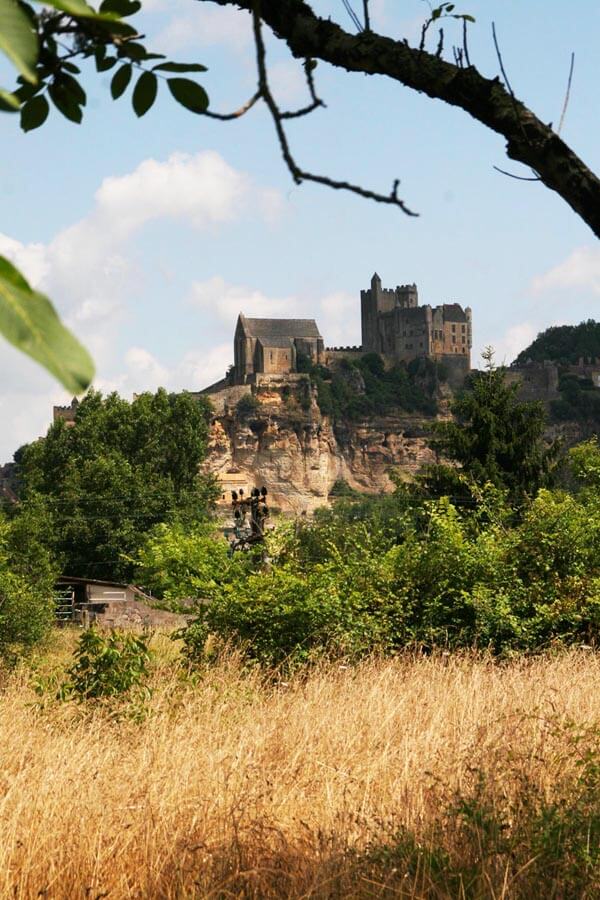
 Lessons on Feudalism in The Lion in Winter
Lessons on Feudalism in The Lion in Winter
In this lesson students investigate how the family feud in The Lion in Winter reflects the politics of medieval feudalism.
TEXT SAMPLE:
“In 1151 Hnery Plantagenet and his father Geoffrey the Fair reluctantly rode to Paris to pay homage to King Louis for their lands — the counties of Anjou and Maine and the duchy of Normandy. It was upon this occasion that the radiant 29-year old Queen of France, Eleanor of Aquitaine, first met the ruggedly handsome, 18-year-old Henry Plantagenet, seething with energy and ambition. Henry had just inherited Normandy from his mother, and was heir to the English throne. Undoubtedly, while Geoffrey the Fair pledged allegiance (fealty) to Louis for his lands, Eleanor and Henry plotted their marriage behind the king’s back…The following spring, two months after Eleanor annulled Louis, she and Henry tied the knot in Poitiers, May 18, 1152…”
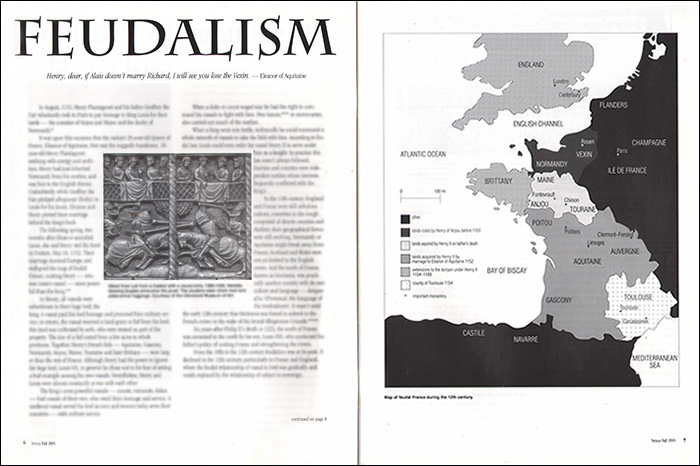
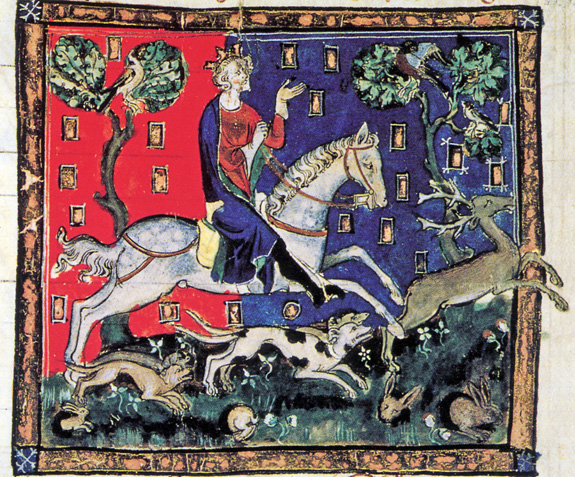
 Lion in Winter History Lesson – John Lackland and Magna Carta
Lion in Winter History Lesson – John Lackland and Magna Carta
In this Lion in Winter lesson we connect the Magna Carta to the spoiled Prince John of the play. We ask students to picture the self-centered, insecure John of the play signing away much of his power when he finally became king. The lesson also explores why Magna Carta is considered a forerunner to the United States Constitution.
“Could you keep anything I gave you?” Henry to John, The Lion in Winter
TEXT SAMPLE:
“When Richard the Lionhearted died in 1199, John finally became King. Though he strove to be a strong king, he quickly made himself unpopular through his cruelty and ineptitude. He lost several wars, and with them most of England’s lands in France. He divorced his wife, stole from his mother and sister-in-law; and is thought to have murdered his nephew (Geoffrey’s son, Arthur), who some people considered the rightful king…”
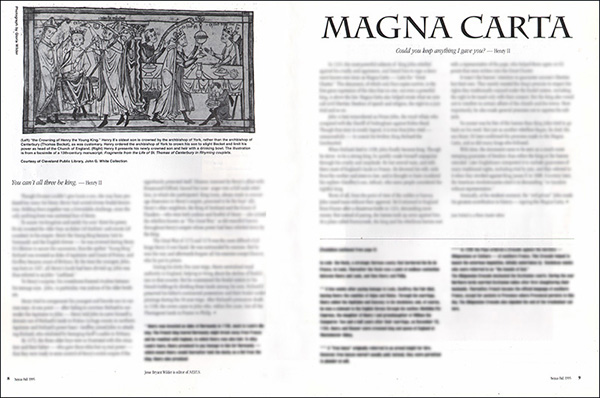
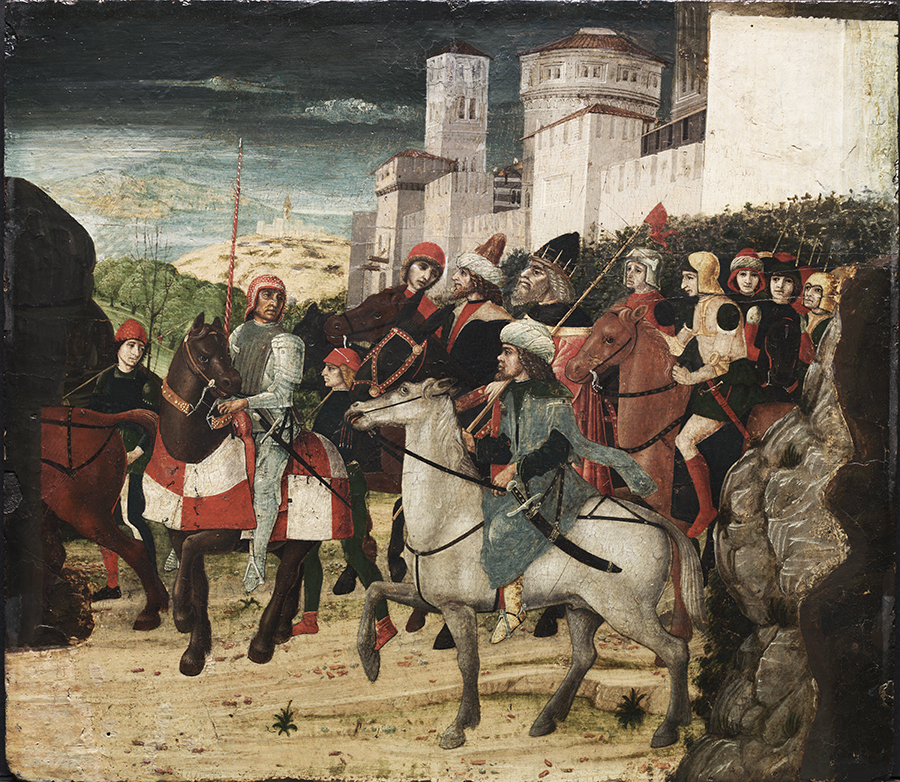
 The Lion in Winter Crusades’ Lesson
The Lion in Winter Crusades’ Lesson
In this lesson the Crusades are personalized by teaching them in connection with characters in The Lion in Winter who participated in them. Eleanor joined her husband King Louis VII on the Second Crusade. Her son King Richard the Lionhearted led the Third Crusade, along with King Philip II, another character in the play. Eleanor’s great-grandson, Saint Louis, launched the 7th and 8th Crusades.
“I even made poor Louis take me on Crusade,” Eleanor of Aquitaine, The Lion in Winter
TEXT SAMPLE:
“In 1143 , in the middle of a war (instigated by Eleanor) between Louis VII and his neighbor, the count of Champagne, Louis’s army torched the cathedral of Vitry in which most of the townsfolk had sought sanctuary. Thirteen hundred men, women and children were incinerated. As their screams pierced the ears of the king – who viewed the battle from a nearby hill – he openly wept. Louis’s guilt lasted for years. He believed the only way to cleanse his conscience was to lead a Crusade to recover the Holy Land. Out of Louis’s guilt, the Second Crusade was born…”
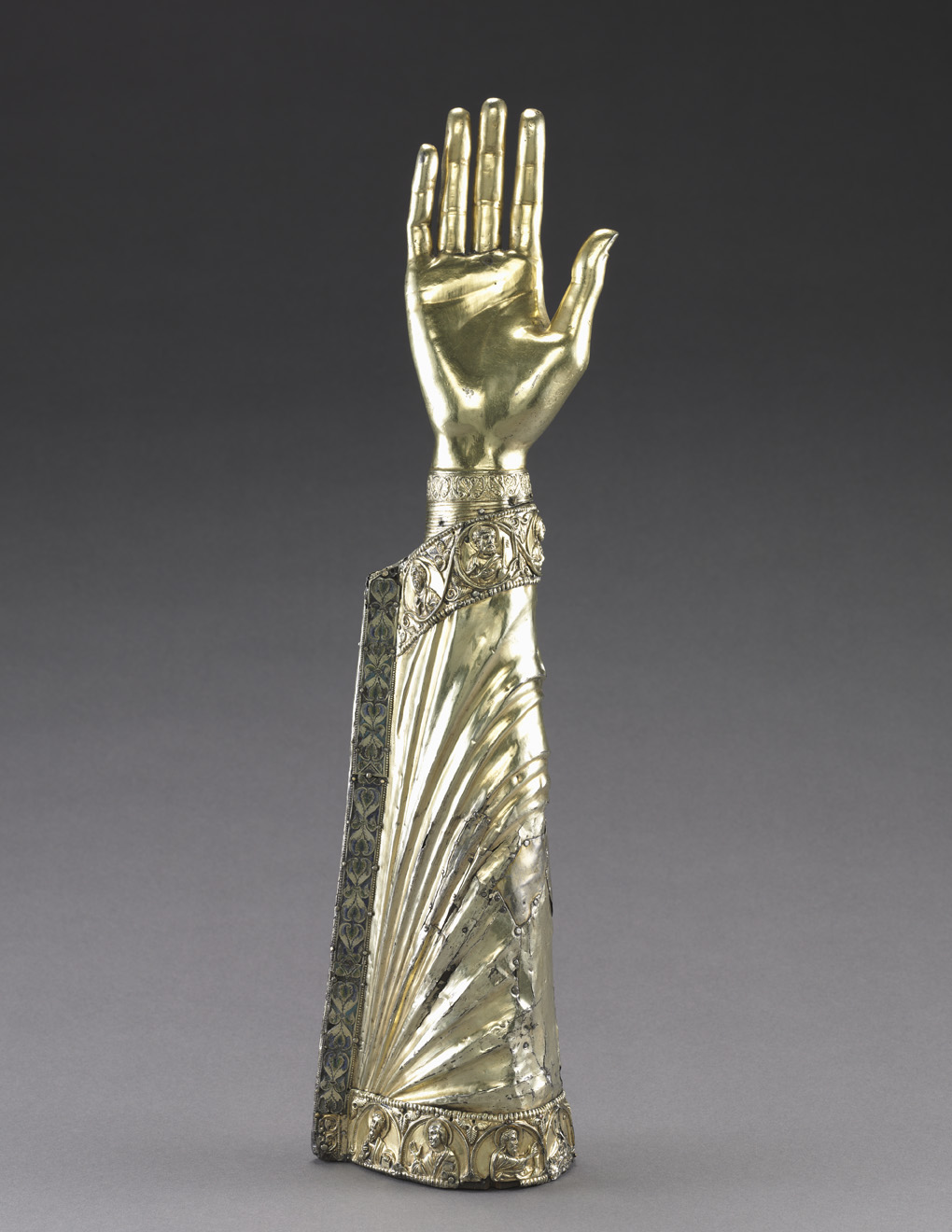
 Relic Cults – A Lion in Winter History Lesson
Relic Cults – A Lion in Winter History Lesson
In this lesson “relic cults,” like the one that drives Chaucer’s Canterbury Tales (Chaucer’s pilgrims, of course, journey to Canterbury to pray at the shrine of Thomas Becket, slain by an indirect order of Henry II) we personalize pilgrimages by teaching them in connection with the early Plantagenets.
“There was no Thomas Becket then, or Rosamund…no rivals, only me.” – Eleanor of Aquitaine, The Lion in Winter
TEXT SAMPLE:
“Bones of Saints, slivers of the “true cross,” even the grill on which Saint Lawrence was roasted were venerated as holy relics during the Middle Ages. Although relic veneration is as old as Christianity, it mushroomed into a cult between the 11th and 15th centuries. Medieval Christians believed that some of a saint’s virtue remained in his or her bones, clothing, or possessions after death; therefore, miracles were often associated with relics…”
“Pilgrims traveled hundreds, sometimes thousands of miles on foot or horseback to worship at cathedrals where relics of saints and martyrs were enshrined. During the peak period of the relic cult, roughly 500,000 pilgrims journeyed to Jerusalem every year – many of them barefoot.”
“Christians believed that the more difficult their pilgrimage was, the greater their spiritual reward would be. Travelling with few resources and no shoes was part of one’s penance. St Louis (Louis IX, Eleanor’s great-grand son, 1214-1270) traveled fifteen miles without shoes on a pilgrimage to Chartres; and Pope Pius II (1405-1464) walked barefoot in the snow to the shrine of Our Lady of Whitekirk in East Lothian, Scotland…”
The Lion in Winter Lessons Part III – Medieval Astronomy and Medicine and the Physics of the Crossbow
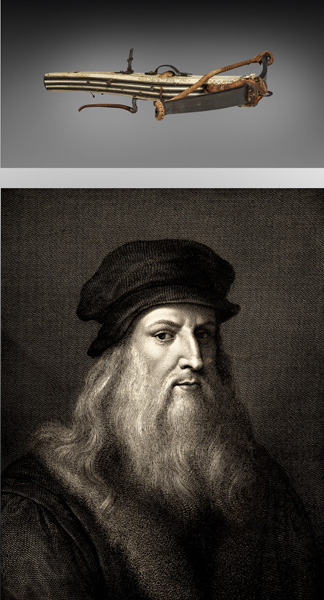
![]() Leonardo Da Vinci Studies of the Crossbow – The Lion in Winder Physics Lesson
Leonardo Da Vinci Studies of the Crossbow – The Lion in Winder Physics Lesson
In this Lion in Winter lesson students learn how Leonardo da Vinci’s crossbow studies paved the way for his flying machines. They also learn fundamental laws of physics that Da Vinci discovered along the way. [For more on Da Vinci’s flying machines see “Chariots of the Sky,” Romeo and Juliet and the Renaissance.
This physics and history lesson satisfies CCSS.ELA-LITERACY.RL.1 and CORE SCIENCE and TECHNICAL STANDARDS CCSS.ELA-LITERACY.RST.1 and RST.2, RST.6, RST.7 and RST.8
“You’ve got a mind….What was on it when you had your soldiers point their crossbows at him?” – Richard the Lionhearted, The Lion in Winter
TEXT SAMPLE:
“The weapon that killed Richard the Lionhearted looks deceptively simple. Yet studies of the crossbow three centuries after Richard’s death paved the way for the invention of the airplane….The crossbow consists of a heavy bow attached crosswise to a wooden mount (stock or tiller) with a guide for directing arrows and a mechanism for holding and releasing the string. It was a formidable weapon widely used during the Middle ages in defending protected places like castles or ships. Even after the advent of gunpowder in the 14th century, the mechanized bow – which was more accurate than early firearms – held its ground in Europe for nearly two more centuries. In the 1400s crossbow and longbow archers often made fun of gunners who were much slower than they at reloading….The fact that crossbows were used to protect lives and costly structures during sieges, pushed bow designers and tradesmen to continually improve the weapon. In their search for perfection, designers began to see beyond the mechanics of the crossbow to general principles of the behavior of forces and matter. It was Leonardo da Vinci who turned this practical investigation into a search for scientific principles in the late 15th and early 16th centuries. Some of Leonardo’s designs called for…”
– by Vernard Foley, Associate Professor specializing in the History of Technology and Science, Purdue University and frequent contributor to Scientific American
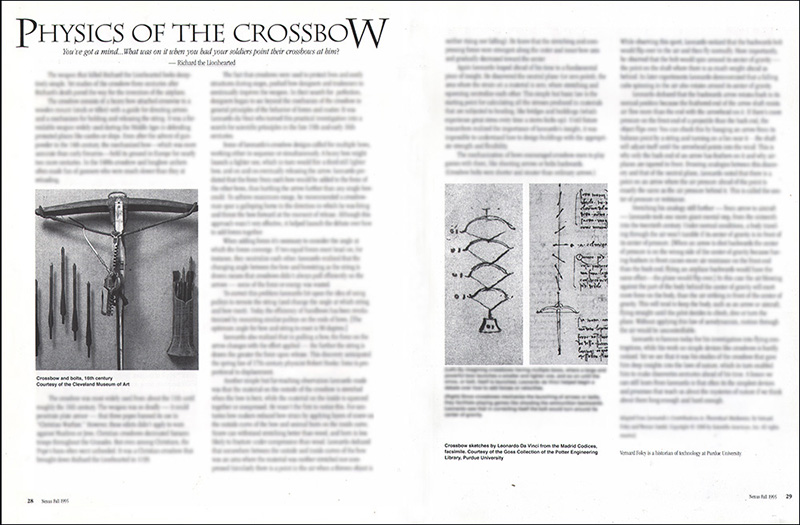
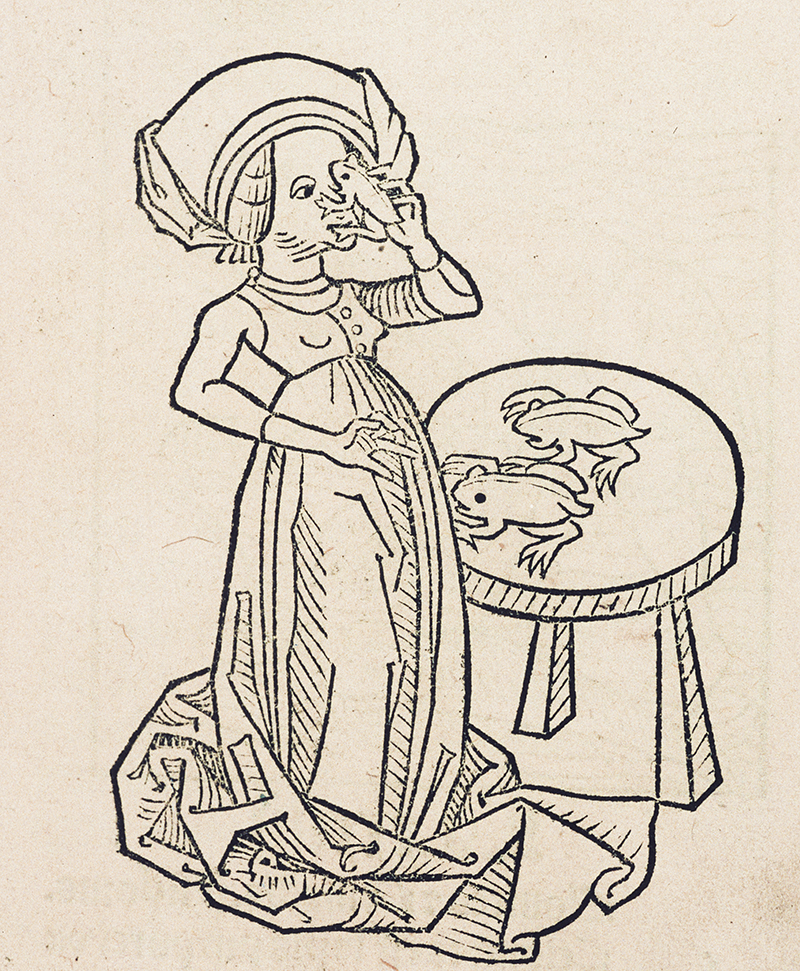
![]() Lion in Winter Lesson on Medieval Medicine as the Forerunner of Modern Science
Lion in Winter Lesson on Medieval Medicine as the Forerunner of Modern Science
Students investigate medieval medical practices and books of secrets, the evolution of experiential medicine to experimental science, and the roles Islamic physicians and philosophers played in stimulating the scientific revolution that began in the 13th century. This lesson aligns with CCSS.ELA-LITERACY.RL.1 and CORE SCIENCE AND TECHNICAL STANDARDS CCSS.ELA-LITERACY.RST.3, RST.5, RST.7 and RST.8.
TEXT SAMPLES:
EXPERIENTIAL TO EXPERIMENTAL
“In the fall of 1154, Henry Plantagenet lay dying of fever. To save her husband, Eleanor, a skilled herbalist, gave him a potion that included a bat’s wing. The fever broke the next day. In medieval times, many doctors believed the lowest or vilest creatures and substances in nature – toads, scorpions, snakes, even cemetery dirt – possessed healing powers. Medicines were often concocted of powdered toads or ground up snake meat….These strange medicines were discovered through trial and error rather than rigorous experimental research. The modern scientific method had yet to be invented. Nevertheless, when a handful of medieval medical practitioners…began carefully recording what they’d learned from hands-on experience, they were laying the groundwork for modern science. Making and recording experience-based observations is only a step away from experimental science…”
ISLAMIC CONTRIBUTIONS TO MEDICINE AND SCIENCE
“Books of Secrets began filtering into Western Europe during the Reconquista (reconquest) of Spain and Crusades in the 12th century. They were an immediate hit. More importantly, during this period books on Greek science, philosophy, medicine, astronomy and mathematics, lost to the West since the fall of Rome, also began pouring into Europe from Islamic countries. The Muslim conquests of the 7th and 8th centuries (Spain, North Africa, Persia and other parts of the Alexander the Great’s old empire) were followed by a two-hundred-year period in which all known Greek texts were translated into Arabic….But the Arabs were more than a pipeline for Greek knowledge. After translating the Greeks, they made major advances in the natural sciences, mathematics, medicine, astronomy (see Arabic Astronomy below) and architecture. This knowledge too was passed on to the West. Among the most important Islamic thinkers and transmitters of Greek knowledge were…”
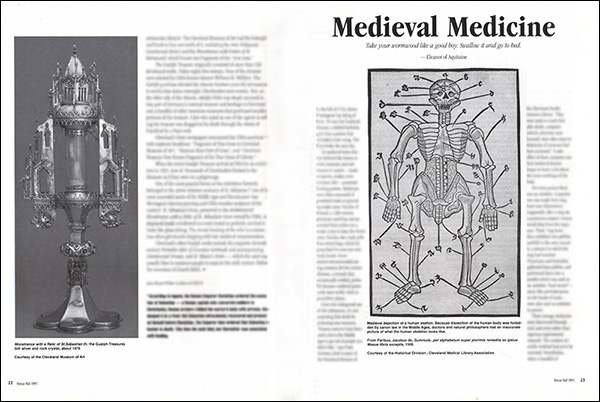
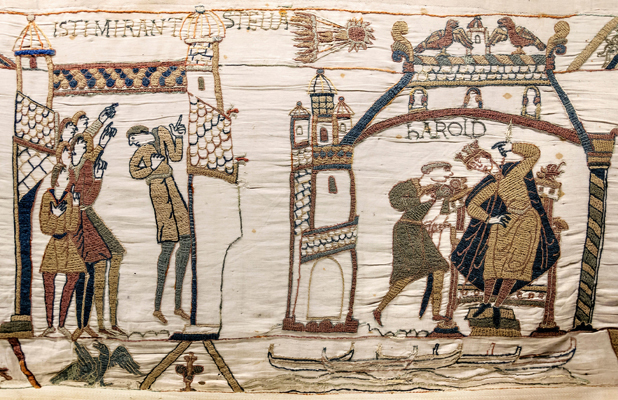
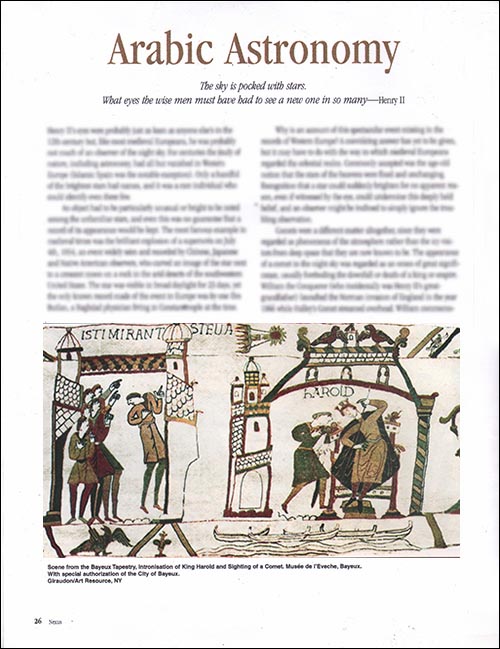
![]() Lion in Winter Lesson on Arabic Astronomy
Lion in Winter Lesson on Arabic Astronomy
This Lion in Winter lesson examines important Arabic contributions to astronomy during the Middle Ages. This chapter aligns with CCSS.ELA-LITERACY.RL.1 and CORE SCIENCE and TECHNICAL STANDARDS CCSS.ELA-LITERACY.RST.2 and RST.4.
“The sky is pocked with stars. What eyes the wise men must have had to see a new one in so many.” Henry II, The Lion in Winter
TEXT SAMPLE:
“Henry II’s eyes were probably just as keen as anyone else’s in the 12th century, but, like most medieval Europeans, he was probably not much of an observer of the night sky. For centuries the study of nature, including astronomy, had all but vanished in Western Europe (Islamic Spain was the notable exception). Only a handful of the brightest stars had names, and it was a rare individual who could identify even these few.”
“An object had to be particularly unusual or bright to be noted among the unfamiliar stars, and even this was no guarantee that a record of its appearance would be kept. The most famous example in medieval times was the brilliant explosion of a supernova on July 4th, 1054, an event widely seen and recorded by Chinese, Japanese and Native American observers, who carved an image of the star next to a crescent moon on a rock in the arid deserts of the southwestern United States. The star was visible in broad daylight for 23 days, yet the only known record made of the event in Europe was by on Ibn Butlan, a Baghdad physician living in Constantinople at the time.”
“Why is an account of this spectacular event missing in the records of Western Europe?…”
– by Clyde Simpson, Astronomy Instructor, Cleveland Museum of Natural History, and Observer for the Solar Section of the American Association of Variable Star Observers
The Lion in Winter Lessons Part IV – Medieval Architecture
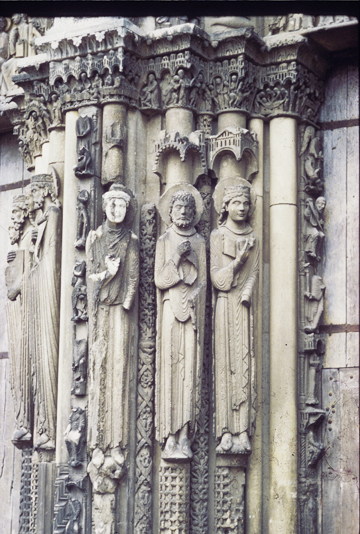
 Gothic Architecture – The Lion in Winter Architecture Lesson 1
Gothic Architecture – The Lion in Winter Architecture Lesson 1
In this Lion in Winter chapter are introduced to Gothic architecture, which was “invented” by Abbot Suger, the confessor and advisor of Eleanor of Aquitaine.
TEXT SAMPLE:
“Suger’s vision was simple. He wanted bigger, brighter churches. In his book Ordinateur, he explains that the old church was too small to accommodate the ‘unruly crowd of visiting pilgrims’ who poured into it on holy days. ‘You could see how people grievously trod down one another…'”
“Suger believed cathedrals should be inviting and beautiful, filled with “heavenly” light. The squat Romanesque cathedrals of the period were gloomy places. Cutting windows from thick Romanesque walls to let in more light meant less support for the massive roof. Too many windows and the ceiling would collapse.”
“Sugar’s vision demanded multiple large windows that would allow light to stream though stained glass and flood the altar and choir in a rainbow of colors…
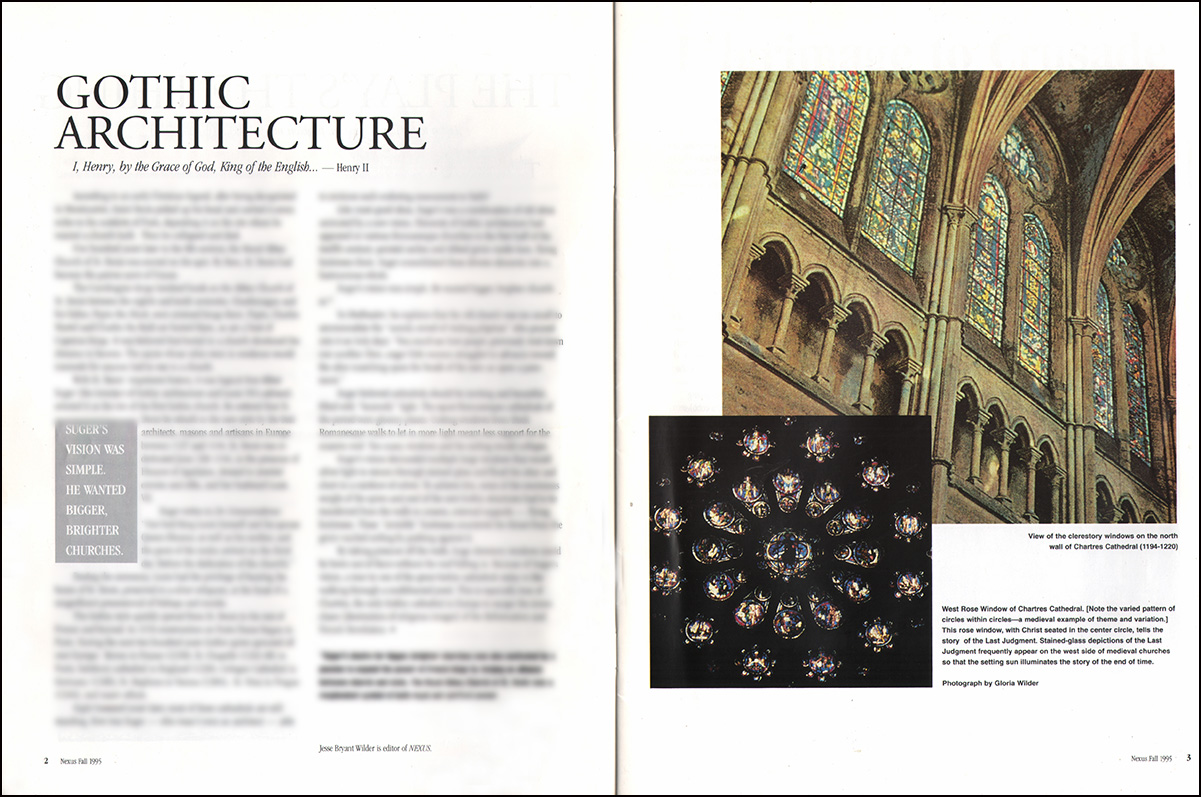
 Chartres Cathedral – The Lion in Winter Architecture Lesson 2
Chartres Cathedral – The Lion in Winter Architecture Lesson 2
Students study the building of the great Cathedral of Chartres and learn about the roles several characters in The Lion in Winter and others played in building it.
The Lion in Winter Lessons Part V – Medieval Music Lessons and Modern Troubadours
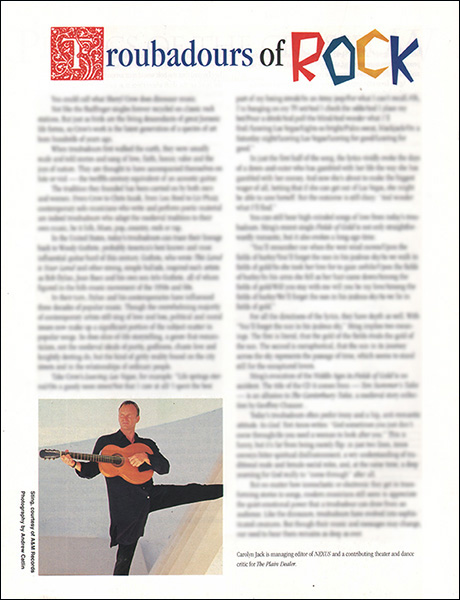
 Troubadours of Rock – The Lion in Winter Modern Music & Culture Lesson
Troubadours of Rock – The Lion in Winter Modern Music & Culture Lesson
This chapter examines the continuation of the troubadour tradition in folk and rock music, exploring lyrics by Sting, Sheryl Crow and Tori Amos.
TEXT SAMPLE:
“When troubadours first appeared, they were usually male and told stories and sang of love, faith, honor, valor and the joys of nature. They are thought to have accompanied themselves on lute or viol – the twelfth-century equivalent of an acoustic guitar. The tradition they founded has been carried on by both men and women. From Sheryl Crow to Chris Isaak, from Lou Reed to Liz Phair, contemporary solo musicians who write and perform poetic material are indeed troubadours who adapt the medieval tradition to their own music, be it folk, blues, pop, country, rock or rap…”
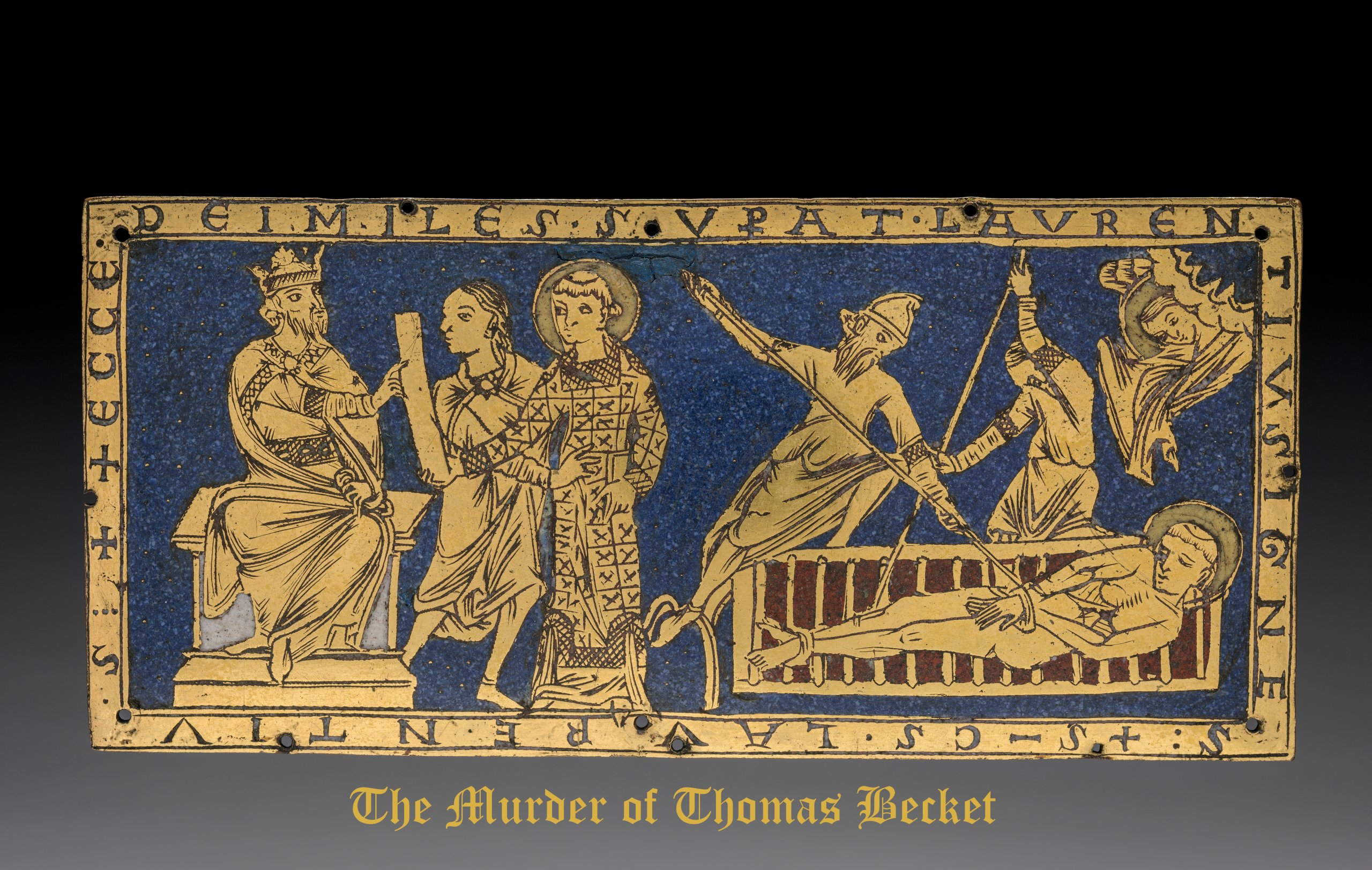
 Motets for Thomas Becket – The Lion in Winter Medieval Music Lesson 1
Motets for Thomas Becket – The Lion in Winter Medieval Music Lesson 1
This chapter chronicles the history of music written to honor Thomas Becket before and after Henry II’s men murdered him in his church.
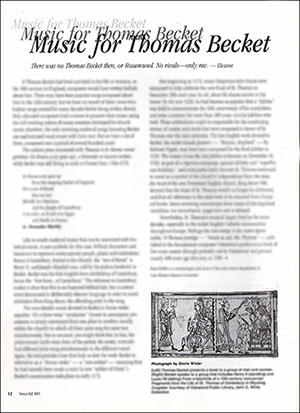
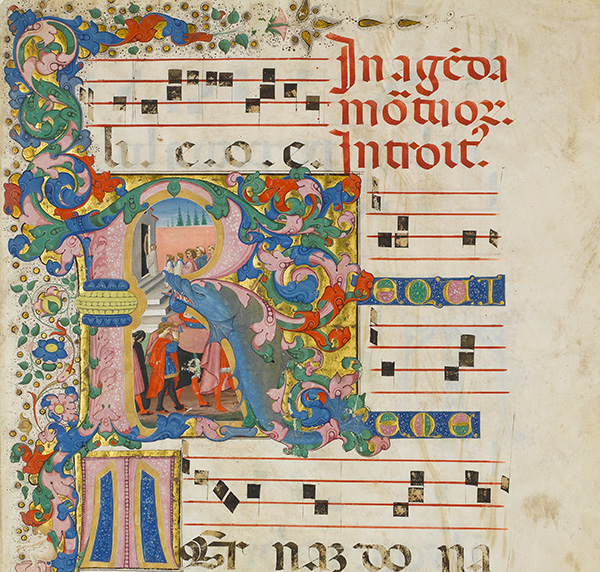
 Gregorian Chant – The Lion in Winter Medieval Music Lesson 2
Gregorian Chant – The Lion in Winter Medieval Music Lesson 2
This Lion in Winter music lesson introduces students to Gregorian Chant – its origins, functions, techniques, and influence.
“Dull as plainsong: la, la, la, forever on one note.” – Eleanor of Aquitaine, The Lion in Winter
TEXT SAMPLE:
“Often called Gregorian chant or plainsong, this mysterious sounding sacred music is still practiced in much the same way as it was in the 12th century. Though it was named after Pope Gregory I, who supposedly established a set of rules for it around 600 A.D., chant has come down to us through 2000 years of human history from its suspected origins in ancient Greek culture. Along the way it borrowed form and melody from the Jews and the Latin language from the Romans. And as it developed from earlier musical forms, so other, more complex kinds of music grew out of the simple tunes and speech rhythms that chant employs…In fact chant may be the world’s most direct translation of words into music, To create plainsong, ancient composers took spoken phrases from prayers and sacred texts and gave each syllable a note. The notes were taken from eight-note series or scales called modes…”
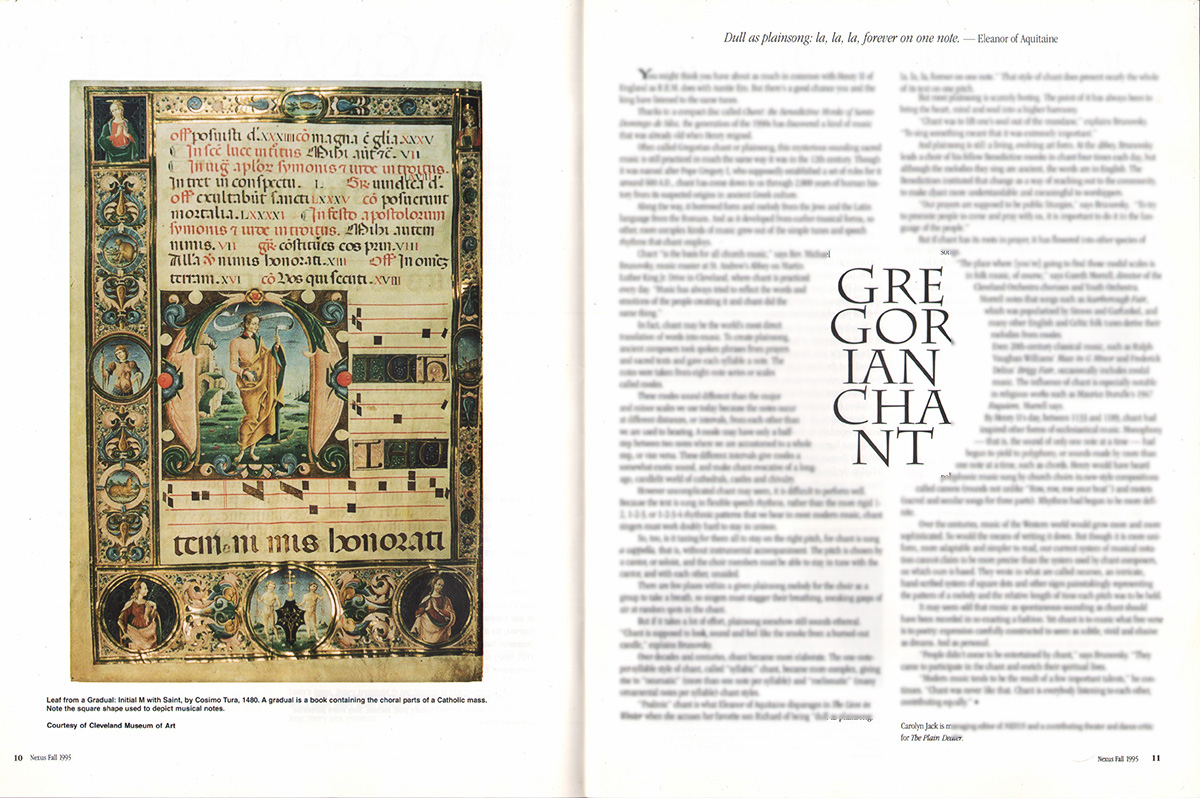
The Lion in Winter Lessons Part VI – Medieval Falconry
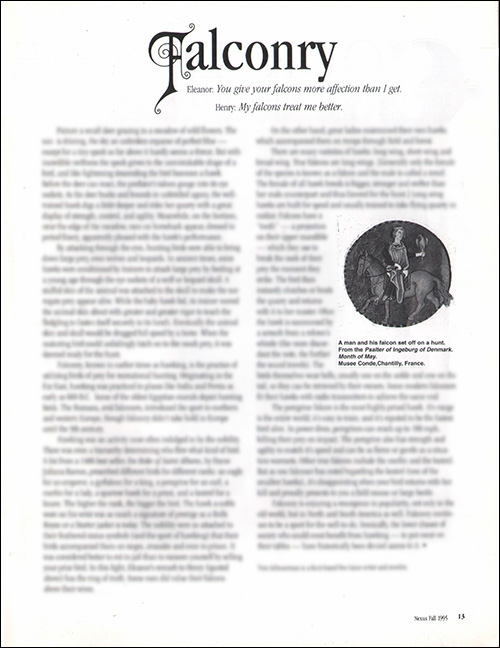
 Falconry – A Lion in Winter History
Falconry – A Lion in Winter History
& Sports Lesson
This Lion in Winter music lesson introduces students to Gregorian Chant – its origins, functions, techniques, and influence.
“You give your falcons more affection than I get.” – Eleanor of Aquitaine, The Lion in Winter
TEXT SAMPLE:
“Falconry, known in earlier times as hawking, is the practice of utilizing birds of prey for recreational hunting. Originating in the Far East, hawking was practiced in India and Persia as early as 600 B.C. Some of the oldest Egyptian murals depict hunting birds. The Romans, avid falconers, introduced the sport to northern and western Europe; though falconry didn’t take hold in Europe until the 9th century.”
“Hawking was an activity most often indulged in by the nobility. There was even a hierarchy determining who flew what kind of bird. A list from a 1486 best seller, the Boke of Saint Albans, by Dame Juliana Barnes, prescribed different birds for different ranks: an eagle for an emperor, a gyrfalcon for a king, a peregrine for an earl, a merlin for a lady, a sparrow hawk for a priest, and a kestrel for a knave…”
The Lion in Winter Lesson Plans and Interdisciplinary Support Material
NEXUS Supplements can be accessed under the SUPPLEMENTS menu. NOTE: NEXUS supplements and books are protected by U.S. Copyright and cannot be photocopied, photographed, or downloaded.
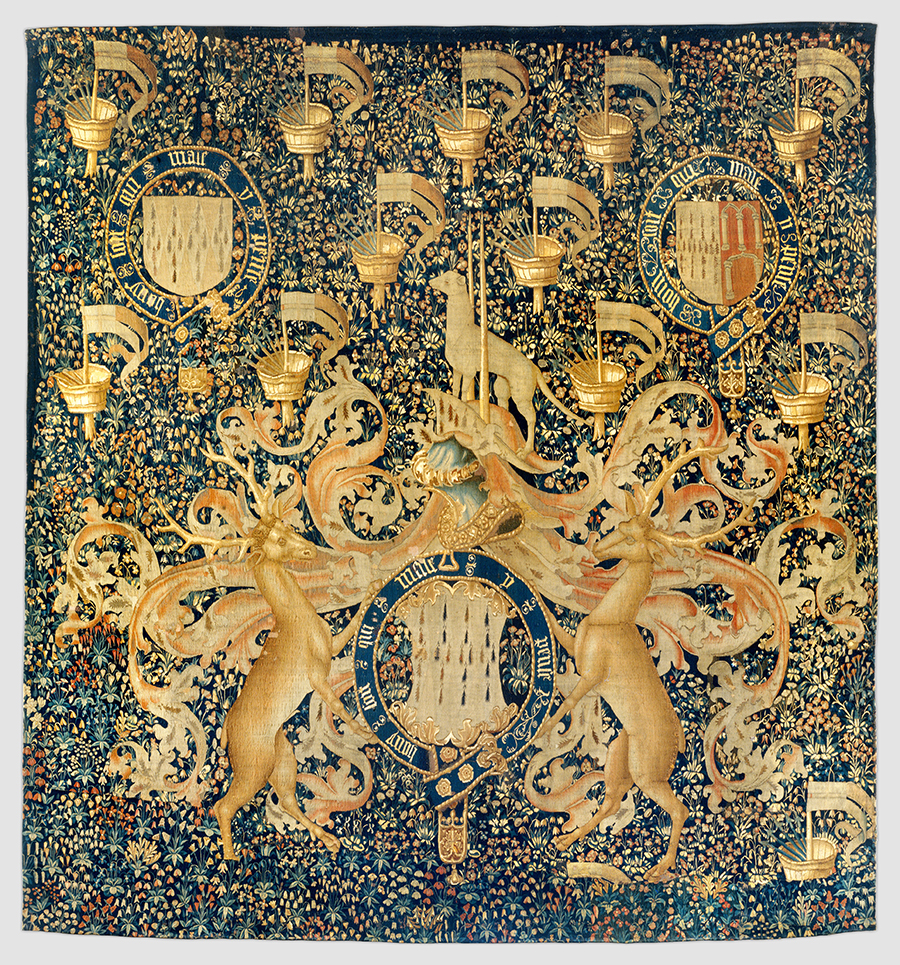
![]() Heraldry (This Supplement includes 5 Questions & an Answer Sheet)
Heraldry (This Supplement includes 5 Questions & an Answer Sheet)
In this The Lion in Winter supplement-lesson, students explore the roots of English and French heraldry in the 12th century.
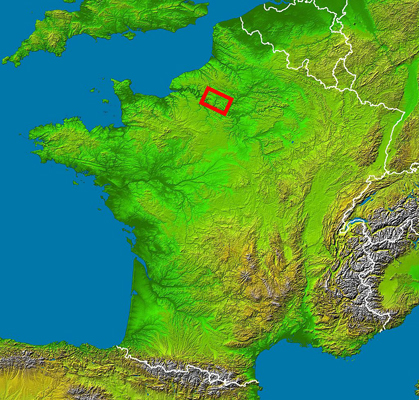
![]() The Vexin (This Supplement includes 10 Questions & an Answer Sheet)
The Vexin (This Supplement includes 10 Questions & an Answer Sheet)
In this The Lion in Winter supplement-lesson students examine the political and strategic significance of the Vexin in the play and during the historical reigns of Henry II, Louis VII and Philip II.

![]() The Lion in Winter Lesson Plans Coming Soon!
The Lion in Winter Lesson Plans Coming Soon!
GUIDELINES: The NEXUS guidelines suggest interdisciplinary activities, additional lessons in five subject areas, and student-friendly ancillary readings.
NEXUS is a 501(c)(3) nonprofit based in Cleveland, OH. Our mission is to provide schools with outstanding interdisciplinary resources that inspire students to THINK, LINK and IMAGINE
A portion of our proceeds is donated annually to UNICEF’S Audrey Hepburn All Children in School Fund.

